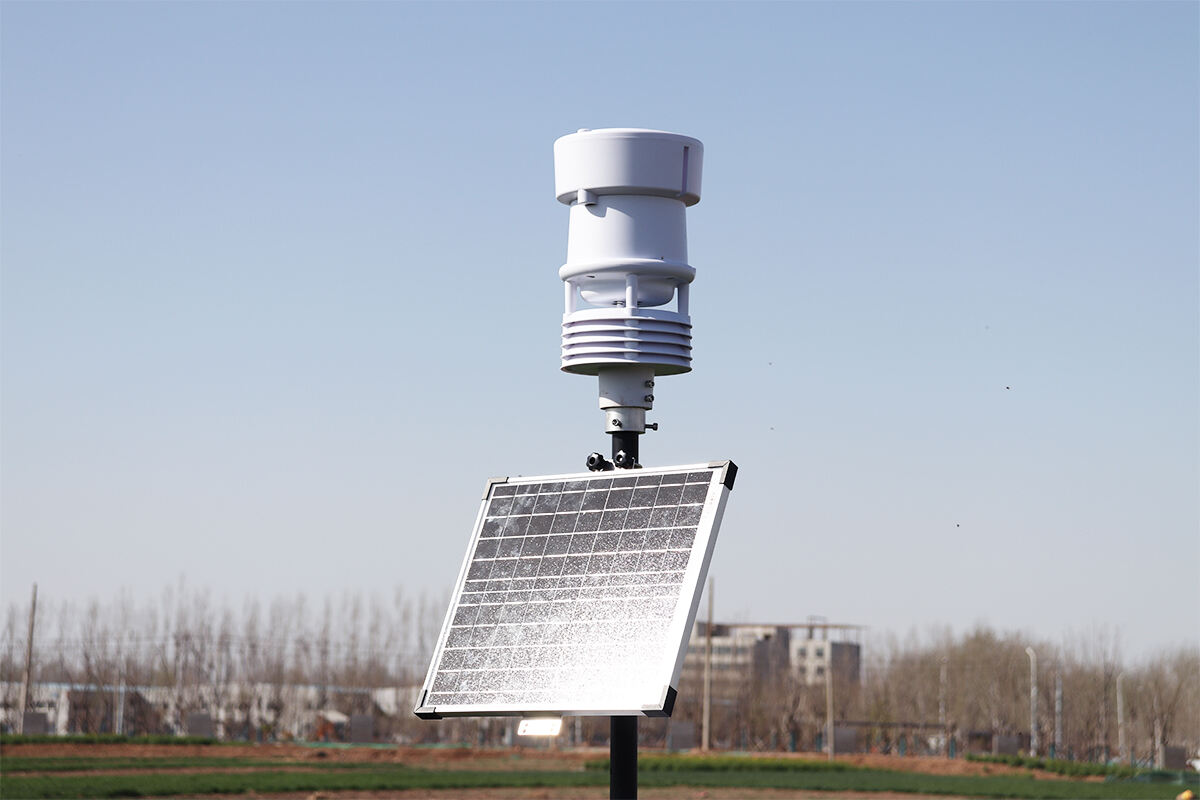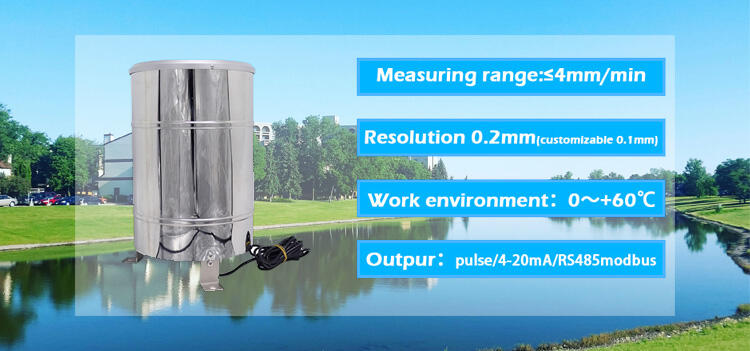In fields such as meteorological monitoring, agricultural irrigation, and environmental research, both rain gauges and rain sensors are common devices. Many people wonder whether there is a difference between them. This article will explain it clearly!
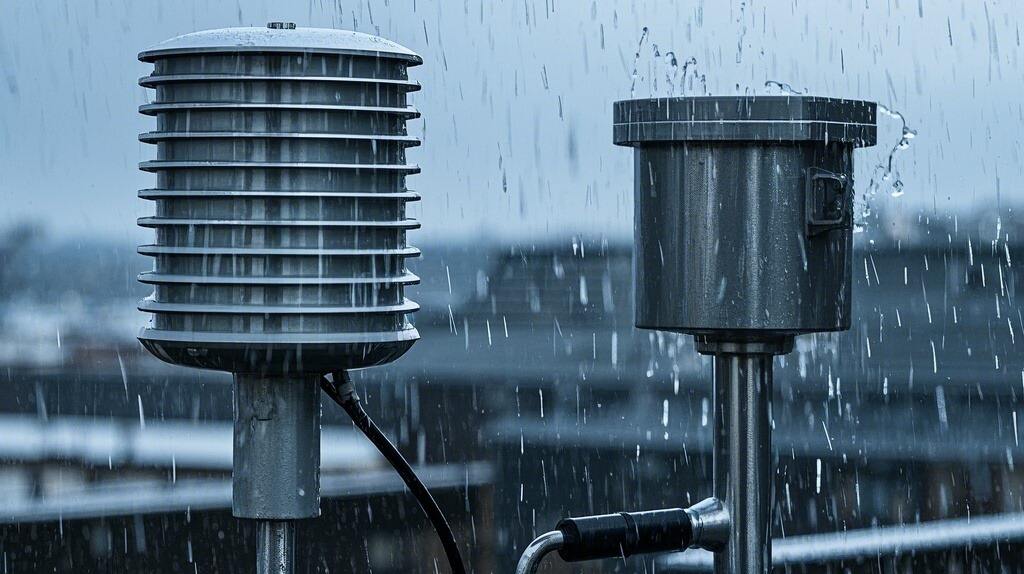
(AI-generated image. Symbolic representation only.)
What is a Rain Gauge?
A rain gauge is an instrument used to measure precipitation, mainly for meteorological observations and water resource management. The basic principle of a rain gauge is to collect rainwater in a container and calculate the precipitation amount based on the accumulated water height. Common types of rain gauges include:
Tipping Bucket Rain Gauge: Contains a small tipping bucket that tilts and records a rainfall event each time it fills up with rainwater.
Piezoelectric Rain Gauge: Measures precipitation by detecting the vibration caused by raindrops.
Optical Rain Gauge: Uses infrared reflection and scattering to monitor raindrops.

What is a Rain Sensor?
A rain sensor is an electronic device used to detect rainfall and is widely used in automation systems. For example, automatic windshield wipers in cars rely on rain sensors. Types of rain sensors include:
Resistive Rain Sensor: Detects changes in conductivity caused by raindrops to determine whether it is raining.
Optical Rain Sensor: Uses changes in infrared or laser beam reflection or scattering to detect raindrops.
Capacitive Rain Sensor: Identifies precipitation based on changes in the dielectric constant of a capacitor caused by rainwater.
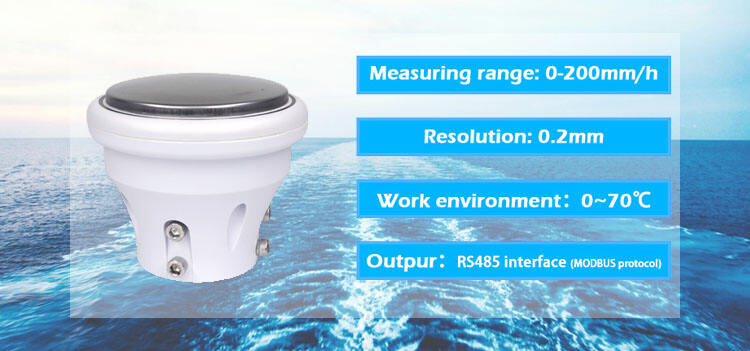
Main Differences Between a Rain Gauge and a Rain Sensor
Although both rain gauges and rain sensors are related to precipitation, they differ in several aspects:
|
Comparison |
Rain Gauge |
Rain Sensor |
|
Main Function |
Quantifies total precipitation |
Detects whether it is raining |
|
Working Principle |
Physically measures rainfall depth or weight |
Electronic sensing or optical detection |
|
Output Data |
Precipitation amount (mm or in) |
Rain occurrence (on/off signal) or rain intensity |
|
Application Fields |
Meteorological stations, agriculture, environmental protection |
Smart homes, automobiles |
|
Accuracy |
High (can quantify precipitation) |
Moderate (mainly for detecting rain occurrence) |
Application Scenarios for Rain Gauges and Rain Sensors
In what areas will they be applied? Let's take a look together.
Meteorological Monitoring
Rain gauges are essential in meteorology. Weather stations use tipping bucket or weighing rain gauges to accurately record precipitation and predict weather changes.
Smart Agriculture
Agricultural irrigation systems are often equipped with rain sensors. When rainfall is detected, irrigation automatically stops, conserving water and improving crop management efficiency.
Smart Transportation
Modern cars use optical rain sensors in automatic windshield wiper systems. When raindrops hit the windshield, the system automatically activates the wipers, enhancing driving safety.
Smart Buildings
In smart building systems, resistive rain sensors can be used to automatically close skylights, retract balcony awnings, or alert users to take rain protection measures when rain is detected.
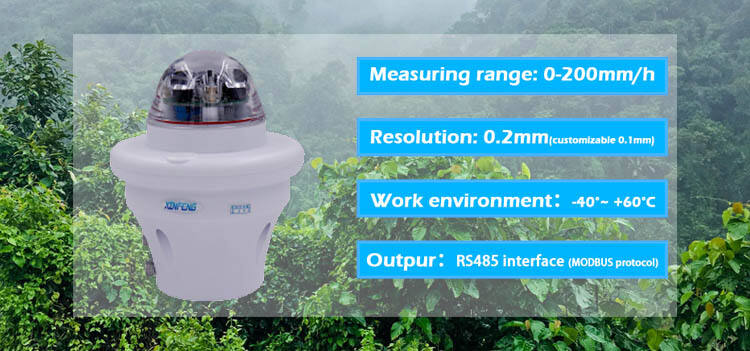
Recommended Related Articles
How to Measure the Rainfall? You Need a Rain Gauge!
How to Place a Rain Gauge for Accurate Precipitation Data
Rain Gauge for Weather Station: A Key Device for Accurate Precipitation Monitoring

 EN
EN
 AR
AR
 BG
BG
 HR
HR
 FR
FR
 JA
JA
 KO
KO
 PT
PT
 RU
RU
 ES
ES
 ID
ID
 VI
VI
 TH
TH
